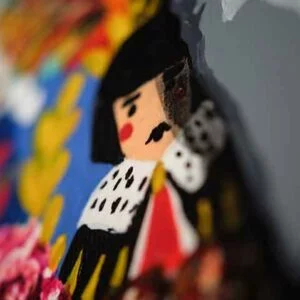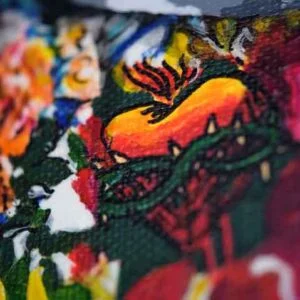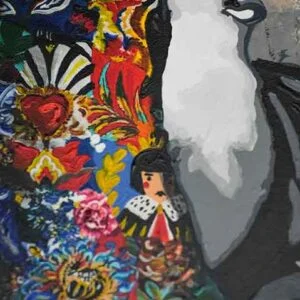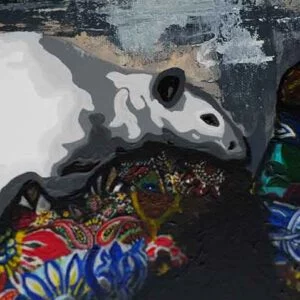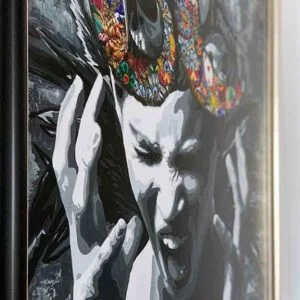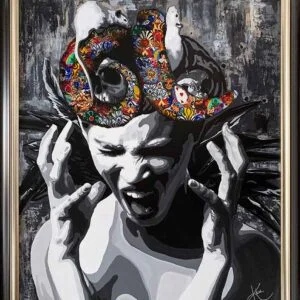ATONEMENT – THE CAPITAL SINNER
ACRYLIC ON CANVAS 80X100CM
The seven deadly sins; pride, greed, wrath, envy, lust, gluttony, and sloth represent the excessive versions of one’s uncontrollable desires or passion for something or another. In Greek mythology, these sins have been the basis of numerous myths and lore, with even the gods and goddesses personifying some of these sins. Apart from Greek mythology, numerous historic literature and artworks have portrayed these sins as evil thoughts or spirits that one needs to overcome.
In this painting, a woman is seen in an internal combat with her sins that have taken the form of agonizing thoughts and feelings. The horns on her head are covered in a flurry of patterns and color to signify how her past sins and her present troubled mental state are the source of her anguish. We empathize with the woman, as we too have found ourselves in agony because of our past actions and poor judgements. We also struggle with our inner voices and demons every day. It is an eternal battle that is fought by everyone with the battlefield being our own minds.
With the four cardinal virtues explored in the oeuvres before, we are aware of the virtues that she will need to embrace for the atonement of her past mistakes and hence silence the antagonizing thoughts within.
ATONEMENT – THE CAPITAL SINNER
Acrylic on Canvas 80x100cm
The seven deadly sins; pride, greed, wrath, envy, lust, gluttony, and sloth represent the excessive versions of one’s uncontrollable desires or passion for something or another. In Greek mythology, these sins have been the basis of numerous myths and lore, with even the gods and goddesses personifying some of these sins. Apart from Greek mythology, numerous historic literature and artworks have portrayed these sins as evil thoughts or spirits that one needs to overcome.
In this painting, a woman is seen in an internal combat with her sins that have taken the form of agonizing thoughts and feelings. The horns on her head are covered in a flurry of patterns and color to signify how her past sins and her present troubled mental state are the source of her anguish. We empathize with the woman, as we too have found ourselves in agony because of our past actions and poor judgements. We also struggle with our inner voices and demons every day. It is an eternal battle that is fought by everyone with the battlefield being our own minds.
With the four cardinal virtues explored in the oeuvres before, we are aware of the virtues that she will need to embrace for the atonement of her past mistakes and hence silence the antagonizing thoughts within.





